Agriculture in Sudan

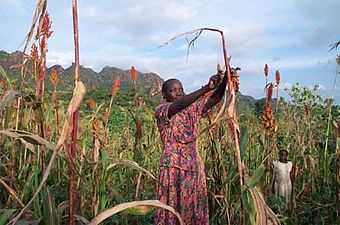
In the early 1990s, agriculture and livestock raising were the main sources of livelihood in Sudan for about 61 percent of the working population.[1] Approximately one-third of the total area of Sudan is suitable for agricultural development and heavier rainfall in the south permits both agriculture and herding by nomadic tribes.
Agricultural products in total account for about 95 percent of the country's exports.[1] In 1998 there was an estimated 16.9 million hectares (41.8 million acres) of arable land and approximately 1.9 million hectares (4.7 million acres) set aside for irrigation, primarily in the north of the country along the banks of the Nile and other rivers. Cash crops (as of 1999) grown under irrigation in these areas include cotton and cottonseed, which is of primary importance to the economy with 172,000 tons and 131,000 tons produced annually respectively,[2]sesame (220,000 tons), sugarcane (5,950,000 tons), peanuts (980,000 tons), dates (176,000 tons), citrus fruits, yams (136,000 tons), tomatoes (240,000 tons), mangoes, coffee, and tobacco.[2] The main subsistence crops produced in Sudan are sorghum (3,045,000 tons), millet (1,499,000 tons), wheat (168,000 tons), cowpeas, beans, pulses, corn (65,000), and barley.[2] Cotton is the principal export crop and an integral part of the country's economy and Sudan is the world's third largest producer of sesame after India and China.[2]
Growth trends
The average annual growth of agricultural production declined in the 1980s to 0.8 percent for the period 1980-87, as compared with 2.9 percent for the period 2965-80. Similarly, the sector's total contribution to GDP declined over the years, as the other sectors of the economy expanded. Total sectoral activities, which contributed an estimated 40 percent of GDP in the early 1970s, had fluctuated during the 1980s and represented about 36 percent in 1988.[1] Crop cultivation was divided between a modern, market-oriented sector comprising mechanized, large-scale irrigated and rainfed farming (mainly in central Sudan) and small-scale farming following traditional practices that was carried on in the other parts of the country where rainfall or other water sources were sufficient for cultivation.[1]
Large investments continued to be made in the 1980s in mechanized, irrigated, and rainfed cultivation, with their combined areas accounting for roughly two-thirds of Sudan's cultivated land in the late 1980s.[1] The early emphasis on cotton growing on irrigated land had decreased. Although cotton remained the most important crop, peanuts, wheat, and sugarcane had become major crops, and considerable quantities of sesame also were grown. Rainfed mechanized farming continued to produce mostly sorghum, and short-fiber cotton was also grown. Production in both subsectors increased domestic supplies and export potentials. The increase appeared, however, to have been achieved mainly by expanding the cultivated area rather than by increasing productivity. To stimulate productivity, in 1981 the government offered various incentives to cultivators of irrigated land who were almost entirely government tenants.[1] Subsistence cultivators produced sorghum as their staple crop, although in the northerly, rainfed, cultivated areas millet was the principal staple. Subsistence farmers also grew peanuts and sesame.
Livestock raising, pursued throughout Sudan except in the extremely dry areas of the north and the tsetse-fly-infested area in the far south, was almost entirely in the traditional sector. Camel farming is particularly popular. Because livestock raising provided employment for so many people, modernization proposals have been based on improving existing practices and marketing for export, rather than moving toward the modern ranching that requires few workers.[1]
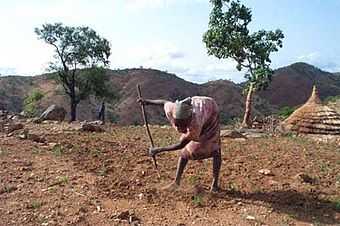
LAND USE
By 1991 only partial surveys of Sudan's land resources had been made, and estimates of the areas included in different landuse categories varied considerably. Figures for potentially arable land ranged from an estimate of 35.9 million hectares made in the mid-1960s to a figure of 84 million hectares published by the Ministry of Agriculture and Natural Resources in 1974.[3] Estimates of the amount actually under cultivation varied in the late 1980s, ranging from 7.5 million hectares, including roughly 10 or 11 percent in fallow, to 12.6 million hectares.[3]
Substantial variations also existed in land classified as actually used or potentially usable for livestock grazing. The ministry and the United Nations Food and Agriculture Organization (FAO) have classified about 24 million hectares as pastureland.[3] The 1965 estimate of land use classified 101.4 million hectares as grazing land, and in 1975 an ILO-United Nations Development Programme (UNDP) interagency mission to Sudan estimated the total potential grazing land at between 120 million and 150 million hectares.[3]
Forestland estimates also differed greatly, from less than 60 million hectares by staff of the Forestry Administration to about 915 million hectares by the Ministry of Agriculture and Natural Resources and the FAO. Dense stands of trees only covered between 20 million and 24 million hectares of the total forestland.[3] Differences in land classification may have been accounted for by use of some woodland areas for grazing and some traditional grazing lands for raising crops. Given the dearth of rainfall during the 1980s and early 1990s, the ecological damage from mechanized farming, and the steady march of desertification, discrepancies in these statistics had little meaning in 1991.
It was generally agreed, however, that in the late 1980s Sudan still had a substantial amount of land suitable for future cropping. The ILO-UNDP mission believed that two-thirds of the potential area for livestock grazing, however, was already in use. In addition to land suitable for cultivation and livestock grazing, Sudan also had about 76 million to 86 million hectares of desert. Additionally, an area of about 2.9 million hectares was covered by swamps and inland water, and about 280,000 hectares were occupied by urban settlements and other man-made features.[3]
85.[3] Sudan had long had a system of land registration through which an individual, an enterprise, or the government could establish title to a piece of land. Such registration had been extensive in northern Sudan, especially in Al Khartum, Al Awsat, and Ash Shamali provinces. Before 1970 all other land (unren adhered to this policy.
The government owned most of the land used by the modern agricultural sector and leased it to tenants (for example, the Gezira Scheme) or to private entrepreneurs, such as most operators of large-scale mechanized rainfed farming.[3] In the late 1980s, however, the great area of land used for pasture and for subsistence cultivation was communally owned under customary land laws that varied somewhat by location but followed a broadly similar pattern.[3] In agricultural communities, the right to cultivate an area of unused land became vested in the individual who cleared it for use. The rights to such land could be passed on to heirs, but ordinarily the land could not be sold or otherwise disposed of. The right was also retained to land left in fallow, although in Bahr al Ghazal, Aali an Nil, and Al Istiwai there were communities where another individual could claim such land by clearing it.
Among the transhumant communities of the north, the rights to cultivated land were much the same, but the dominant position of livestock in community activities had introduced certain other communal rights that included common rights to grazing land, the right-of-way to water and grazing land, the right to grass on agricultural land unless the occupier cut and stacked it, and the right to crop residues unless similarly treated. In the western savannas, private ownership of stands of hashab trees could be registered, an exception to the usual government ownership of the forests. But dead wood for domestic fuel and the underlying grass were common property. Water, a matter of greatest importance to stock raisers, was open to all if free standing, but wells that had been dug and the associated drinking troughs were private property and were retained by the digger season after season. In northern Sudan, especially in the western savanna where increasing population and animal numbers have placed pressure on the land, violations of customary laws and conflicts between ethnic groups over land rights have been growing.[3] Resolution of these problems has been attempted by local government agencies but only on a case-by-case basis.
Irrigated Agriculture

In 1991 Sudan had a large modern irrigated agriculture sector totaling more than 2 million hectares out of about 84 million hectares that are potentially arable.[3] About 93 percent of the irrigated area was in government projects; the remaining 7 percent belonged to private operations. The Nile and its tributaries were the source of water for 93 percent of irrigated agriculture, and of this the Blue Nile accounted for about 67 percent. Gravity flow was the main form of irrigation, but about one-third of the irrigated area was served by pumps.[3]
History
The waters of the Nile in Sudan have been used for centuries for traditional irrigation, taking advantage of the annual Nile flood. Some use of this method still continued in the early 1990s, and the traditional shaduf (a device to raise water) and waterwheel were also used to lift water to fields in local irrigation projects but were rapidly being replaced by more efficient mechanized pump systems. Among the first efforts to employ irrigation for modern commercial cropping was the use of the floodwaters of the Qash River and the Baraka River (both of which originate in Ethiopia) in eastern Sudan to grow cotton on their deltas. This project was started in the late 1860s by the Egyptian governor and continued until interrupted by the turbulent period of the 1880s, leading to the reconquest of the country by the British in 1899. Cultivation was resumed in 1896 in the Baraka Delta in the Tawkar area, but in the Qash Delta it only resumed after World War I. Between 1924 and 1926, canals were built in the latter delta to control the flood; sandstorms made canals unfeasible in the Baraka. Between the 1940s and the 1970s, various projects were developed to irrigate land. In 1982 both deltas yielded only one crop a year, watered by the flood. Adequate groundwater, however, offered the eventual possibility of using pump irrigation from local wells for additional cropping or for supplementing any flood shortages.

The drought that affected Sudan in the 1980s was a natural disaster that had a crushing effect on the country's irrigation systems. In 1990-91, for instance, water was so scarce in the Tawkar area that for the first time in 100 years the crops failed.
As of 1990, the country's largest irrigation project had been developed on land between the Blue and White Nile rivers south of their confluence at Khartoum. This area is generally flat with a gentle slope to the north and west, permitting natural gravity irrigation, and its soils are fertile cracking clays well suited to irrigation. The project originated in 1911, when a private British enterprise, Sudan Plantations Syndicate, found cotton suited to the area and embarked on what in the 1920s became the Gezira Scheme, intended principally to furnish cotton to the British textile industry. Backed by a loan from the British government, the syndicate began a dam on the Blue Nile at Sannar in 1913.[3] Work was interrupted by World War I, and the dam was not completed until 1925. The project was limited by a 1929 agreement between Sudan and Egypt that restricted the amount of water Anglo-Egyptian Sudan could use during the dry season. By 1931 the project had expanded to 450,000 hectares (1,100,000 acres), the maximum that then could be irrigated by the available water, although an additional 10,000 hectares (25,000 acres) were added in the 1950s.[3] The project was nationalized in 1950, and was operated by the Sudan Gezira Board as a government enterprise. In 1959 a new agreement with Egypt greatly increased the allotment of water to Sudan, as did the completion in the early 1960s of the Manaqil Extension on the western side of the Gezira Scheme. By 1990 the Manaqil Extension had an irrigated area of nearly 400,000 hectares (990,000 acres) hectares, and with the 460,000 hectares (1,100,000 acres) eventually attained by the original Gezira Scheme, the combined projects accounted for half the country's total land under irrigation.[3]
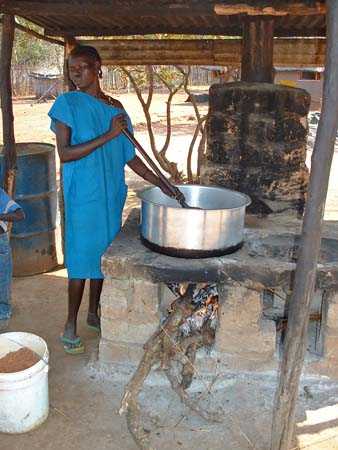
In the early 1960s, the government set up a program to resettle Nubians displaced by Lake Nubia (called Lake Nasser in Egypt), which was formed by the construction of the Aswan High Dam in Egypt. To provide farmland for the Nubians, the government constructed the Khashm al Qirbah Dam on the Atbarah River and established the Halfa al Jadidah (New Halfa) irrigation project. Located west of Kassala, this project was originally designed to irrigate about 164,000 hectares (410,000 acres).[3] In 1982 it was the only large irrigation project in the country that did not use the waters of the Blue Nile or White Nile. The resettlement was effected mainly after completion of the Khashm al Qirbah Dam in 1964. Part of the irrigated area was also assigned to local inhabitants. The main commercial crops initially introduced included cotton, peanuts, and wheat. In 1965 sugarcane was added, and a sugar factory having a design capacity of 60,000 tons was built to process it.[3] The project enabled 200,000 hectares (490,000 acres) of land to be irrigated for the first time. Heavy silting as well as serious problems of drainage and salinity occurred. As a result, by the late 1970s the reservoir had lost more than 40 percent of its original storage capacity and was unable to meet the project water requirements. These problems persisted in the early 1990s.
The multipurpose Roseires Dam was built in 1966 and power- generating facilities were installed in 1971.[3] Both the water and the power were needed to implement the Rahad River irrigation project located east of the Rahad River, a tributary of the Blue Nile. The Rahad entered the Blue Nile downstream from the dam and during the dry season had an insufficient flow for irrigation purposes. Work on the initial 63,000 hectares (160,000 acres) of the project began in the early 1970s, the first irrigation water was received in 1977, and by 1981 about 80 percent of the prepared area was reported to be irrigated.[3] (In May 1988, the World Bank agreed to provide additional funding for this and other irrigation projects). Water for the project was pumped from the Blue Nile, using electric power from the Roseires plant, and was transported by an eighty-kilometer-long canal to the Rahad River (en route underpassing the Dindar River, another Blue Nile tributary). The canal then emptied into the Rahad above a new barrage that diverted the combined flow from the two sources into the project's main irrigation canal. Irrigation was by gravity flow, but instead of flat field flooding, furrow irrigation was used, because it permitted more effective use of machinery.
In the 1920s, private irrigation projects using diesel pumps also had begun to appear in Al Khartum Province, mainly along the White Nile, to provide vegetables, fruit, and other foods to the capital area. In 1937 a dam was built by the Anglo-Egyptian condominium upstream from Khartoum on the White Nile at Jabal al Awliya to regulate the supply of water to Egypt during the August to April period of declining flow.[3] Grazing and cultivated land along the river was flooded for almost 300 kilometres (190 mi). The government thereupon established seven pump irrigation projects, partially financed by Egypt, to provide the area's inhabitants with an alternative to transhumance.[3]
This irrigation project eventually proved successful, making possible large surpluses of cotton and sorghum and encouraging private entrepreneurs to undertake new projects. High cotton profits during the Korean War (1950–53) increased private interest along the Blue Nile as well, and by 1958 almost half the country's irrigated cotton was grown under pump irrigation.[3] During the 1960s, however, downward fluctuations in world cotton prices and disputes between entrepreneurs and tenants led to numerous failures of pump irrigation projects. In 1968 the government assumed ownership and operation of the projects, establishing the Agricultural Reform Corporation for this purpose, and the takeover began that year with the larger estates.[3] Subsequently, as leases expired, the corporation acquired smaller projects, until May 1970 when all outstanding leases were revoked. A considerable number of small pump operations that developed on privately owned land, chiefly along the main Nile but also on the Blue Nile, continued to operate.
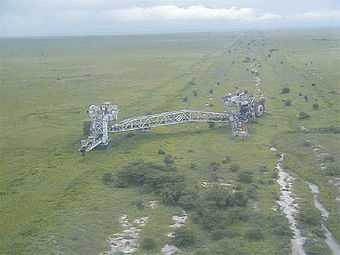
Since the 1950s, the government has constructed a number of large pump projects, mostly on the Blue Nile. These have included the Junayd project on the right bank of the Blue Nile east of the Gezira Scheme. This project, with an irrigated area of about 36,000 hectares (89,000 acres), went into operation in 1955 to provide an alternative livelihood for nomadic pastoralists in the area.[3] It produced cotton until 1960, when about 8,400 hectares (21,000 acres) were converted to sugarcane. A sugar factory built to process the crop (with a potential capacity of 60,000 tons of sugar a year) opened in 1962. In the early 1970s, the Japanese-assisted As Suki project, also of 36,000 hectares (89,000 acres), was established upstream from Sannar to grow cotton, sorghum, and oilseeds. In the mid-1970s, the government constructed a second project near Sannar of about 20,000 hectares (49,000 acres) hectares. In addition to cotton and other crops such as peanuts, about 8,400 hectares (21,000 acres) of the area were devoted to raising sugarcane.[3] The cane-processing factory, with a design capacity of 110,000 tons of sugar a year, opened in 1976. Several smaller Blue Nile projects added more than an additional 80,000 hectares (200,000 acres) to Sudan's overall irrigated area during this time.
In the 1970s, when the consumption and import of sugar grew rapidly, domestic production became a priority, and two major pump-irrigated sugar plantations were established on the White Nile in the Kusti area. The Hajar Asalaya Sugar Project, begun in 1975, had an irrigated area of about 7,600 hectares. The sugar factory, completed in 1977, had a potential annual capacity of 110,000 tons.[3] The Kinanah Sugar Project, which had almost 16,200 hectares (40,000 acres) under irrigation in 1981 and had a future potential of over 33,000 hectares (82,000 acres), was one of the world's largest sugar- milling and refining operations.[3] In 1985-86 production reached more than 330,000 tons a year. This project, first proposed in 1971, was beset with funding problems and overruns that increased overall costs from the equivalent of US$113 million estimated in 1973 to more than US$750 million when the plant opened officially in early 1981.[3]
The Kinanah Sugar Project, unlike the country's four other government-owned sugar projects, was a joint venture—among the governments of Sudan, Kuwait, and Saudi Arabia, and the Arab Investment Company, the Sudan Development Corporation, Kinanah Limited, and the AAAID, including local Sudanese banks. An initial trial run in the 1979-80 cane season produced 20,000 tons of sugar. Yield increased to an estimated 135,000 to 150,000 tons the following season.[3] Production at the Hajar Asalaya factory did not get under way until the 1979-80 season because of cane and sugar-processing difficulties. Problems have also affected the other three state sugar factories, but as a result of proposed World Bank management, the output total of these four government operations for the 1984-85 season improved to nearly 200,000 tons. Output declined to 159,000 tons in 1985-86 because of the drought. In 1989 sugarcane production reached 400,000 tons.[3]
Rainfed Agriculture
Cultivation dependent on rainfall falls into two categories. Most Sudanese farmers always have relied on rainfed farming. In addition to these traditional farmers, a large modern mechanized rainfed agriculture sector has developed since 1944-45, when a government project to cultivate the cracking clays of central Sudan started in the Al Qadarif area of Ash Sharqi Province, largely to meet the food needs of army units stationed in the British colonies in eastern Africa (present-day Kenya, Tanzania, and Uganda). An average of about 6,000 hectares a year was cultivated between 1945 and 1953, producing chiefly sorghum, under a sharecropping arrangement between the government and farmers who had been allocated land in the project. These estates proved costly, however, and in 1954 the government began encouraging the private sector to take up mechanized farming in the area, a policy that continued after Sudan gained independence in 1956. Under the new approach, the government established several state farms to demonstrate production methods and to conduct research. Research activities have been very limited, however, because of staffing and funding problems, and the farms have been operated essentially as regular production units.
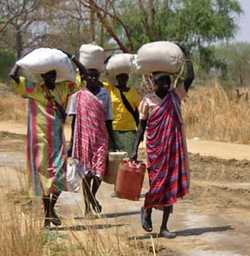
The private sector response was positive, and by 1960 mechanized farming had spread into other areas of the cracking clay zone in Ash Sharqi and Al Awsat provinces. The government set aside rectangular areas that were divided into plots of 420 hectares (later raised in places to 630 hectares) each. Half of these plots were leased to private farmers, the other half left in fallow.[3] After four years, the originally leased land was to be returned to fallow and the farmer was to receive a new lease to an adjacent fallow area. When the demand for land grew faster than it could be demarcated, areas outside the designated project limits were taken over by private individuals. The four-year lease proved unpopular because it meant new investment in clearing land every four years, and apparently much of the worked land continued to be cultivated while fallow land was also placed under cultivation. By 1968 more than 750,000 hectares were being cultivated, of which it was estimated that more than 200,000 hectares constituted unauthorized holdings.[3] The average agricultural production growth rate declined, however, from 2.9 percent in the period between 1965 and 1980, to 0.8 percent in the period between 1980 and 1987. Reportedly, for the 1991-92 season, the Ministry of Agriculture and Natural Resources planned for about 7.3 million hectares of food crops to be planted, with about 1.6 million hectares planted in the irrigated sector and about 5.7 million hectares in the rain-fed areas.[3]
The investment requirements for mechanized farming favored prosperous cultivators, and eventually most farms came to be operated by entrepreneurs who raised capital through mortgageable property or other assets in the urban centers. Through arrangements with other individuals, these entrepreneurs frequently managed to control additional plots beyond the legal limit of two. Their ability to obtain capital also permitted them to abandon depleted land and to move into newly demarcated uncleared areas, a practice that had a deleterious impact upon the environment, deprived the indigenous inhabitants of work opportunities, and increased desertification. In 1968, to expand the operator base and to introduce more control over land allocation, crops, and farming methods, the government established the Mechanized Farming Corporation (MFC), an autonomous agency under the Ministry of Agriculture and Natural Resources. From 1968 through 1978, the IDA made three loans to the government to enable the MFC to provide technical assistance, credit for landclearing and machinery, and marketing aid to individual farmers and cooperative groups. The MFC also became the operator of state farms.[3]

In the late 1970s, about 2.2 million hectares had been allocated for mechanized farming, and about 420,000 hectares more had been occupied without official demarcation. About 1.9 million hectares in all were believed to be under cultivation in any one season.[3] Of the officially allocated land, more than 70 percent was held by private individuals. Private companies had also begun entering the field, and some allocations had been made to them. State farms accounted for another 7.5 percent. About 15 percent of the total allocated land was in MFC-IDA projects. The largest proportion of mechanized farming was in Ash Sharqi Province, 43 percent; the next largest in Al Awsat Province, 32 percent; and about 20 percent was in Aali an Nil Province. Mechanized farming had also been initiated in southern Kurdufan Province through a project covering small-scale farmers in the area of the Nuba Mountains, but under a different government program.[3] Proposals also have been made for MFC projects using mechanized equipment in other areas of southern Kurdufan (some have already been tried) and southern Darfur provinces. There were serious feasibility problems in view of competition for land and conflicts with traditional farming practices, difficult soil conditions, and the probable negative effect on the large numbers of livestock of nomads.
Only a few crops had been found suitable for cultivation in the cracking clay area. Sorghum had been the principal one, and during the early 1980s it was planted on an average of about 80 percent of the sown area. Sesame and short-fiber cotton were also grown successfully but in smaller quantities, sesame on about 15 percent of the land and cotton on about 5 percent. Soil fertility has reportedly been declining because of the continued planting of sorghum and the lack of crop rotation. Yields have apparently decreased, but in view of the area's greatly varying climatic conditions and the uncertain production data, definitive conclusions on trends appeared premature.
Fishing
Fishing was largely carried out by the traditional sector for subsistence.[1] An unknown number of small operators also used the country's major reservoirs in the more populated central region and the rivers to catch fish for sale locally and in nearby larger urban centers. The few modern fishing ventures, mainly on Lake Nubia (Nasser) and in the Red Sea, were small.
Forestry
The forestry subsector comprised both traditional gatherers of firewood and producers of charcoal--the main sources of fuel for homes and some industry in urban areas—and a modern timber and sawmilling industry, the latter government owned. Approximately 21 million cubic meters of wood, mainly for fuel, were cut in 1987. Gum arabic production in FY 1986-87 was about 40,000 tons.[1] In the late 1980s, it became in most years the second biggest export after cotton, amounting to about 11 percent of total exports.[1]
See also
References
![]() This article incorporates public domain material from websites or documents of the Library of Congress Country Studies.
This article incorporates public domain material from websites or documents of the Library of Congress Country Studies.
- ↑ 1.0 1.1 1.2 1.3 1.4 1.5 1.6 1.7 1.8 1.9 "Agriculture, livestock, fisheries and forestry in Sudan". Embassy of the Republic of Sudan, Washington, Library of Congress. June 1991. Retrieved August 30, 2008.
- ↑ 2.0 2.1 2.2 2.3 "Sudan Agriculture". Nations Encyclopedia. Archived from the original on 7 October 2008. Retrieved August 30, 2008.
- ↑ 3.0 3.1 3.2 3.3 3.4 3.5 3.6 3.7 3.8 3.9 3.10 3.11 3.12 3.13 3.14 3.15 3.16 3.17 3.18 3.19 3.20 3.21 3.22 3.23 3.24 3.25 3.26 3.27 3.28 3.29 3.30 3.31 3.32 3.33 3.34 3.35 "Agriculture in Sudan". U.S. Country Studies, Library of Congress. June 1991. Retrieved August 30, 2008.
| ||||||||||||||
| ||||||||||||||
